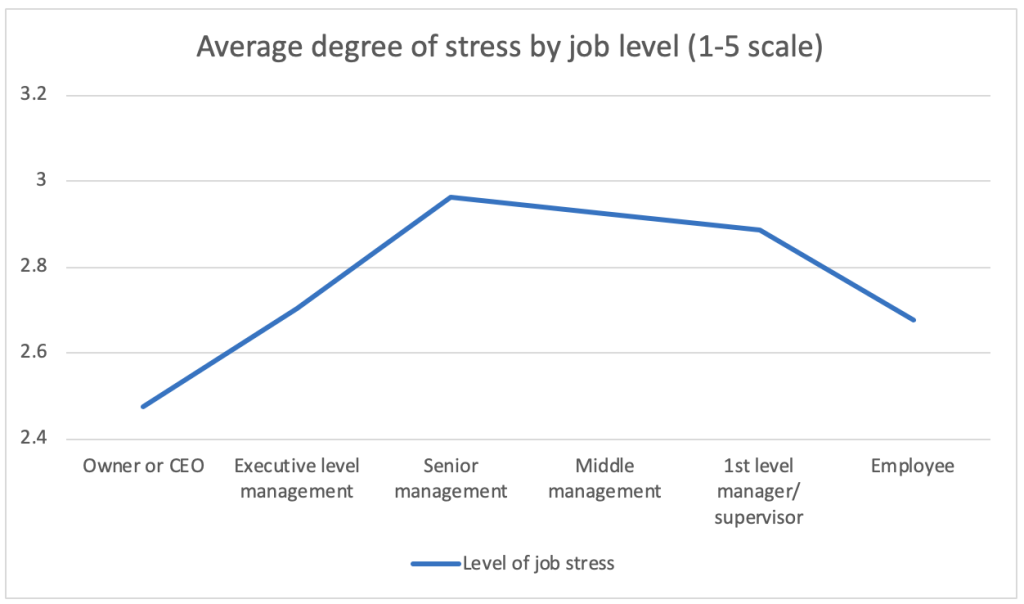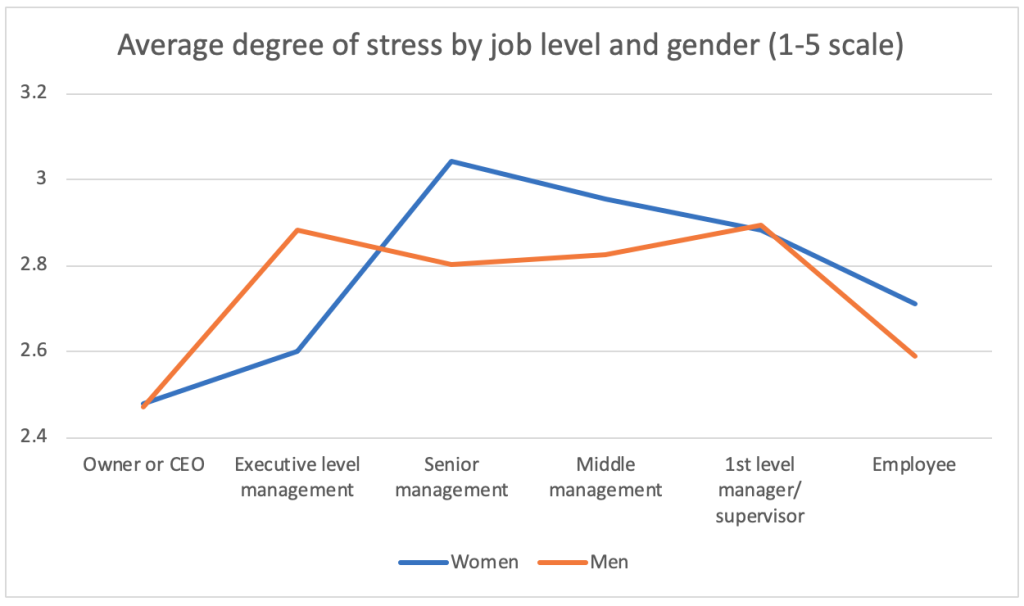Being at the top is stressful, or so we are told. After all, top executives have high-powered, demanding stressful roles, don’t they? Surely that is one reason why they earn the big bucks. In fact, research suggests otherwise. It is the combination of lack of control, lack of support, and high job demands that lead to stress, and although the top jobs are demanding, senior executives have more control over their actions than others do. So the people at the top tend to report less stress. Lack of control is one reason why many people are feeling stressed during the COVID-19 crisis; we have very little control over the course of the disease, or over how government policy will affect our jobs. In regular times, senior executives have (or feel they have) more control over their fates than others do, and as a result, are in general less stressed.
In several of our previous research studies, we have looked at the stress levels of people at different levels in an organization, and a number of these are particularly relevant to where we are now. We have investigated stress in the context of the ‘always-on’ culture, where people have the capacity to work from home and find it difficult or impossible to switch off, stress related to email usage and stress in the context of cybersecurity, ensuring that your own online working environment is safe. In total, over 1,600 people took part. In each study, we were able to look at the effects of level (employee, manager, etc.) and gender. The results were fascinating.
Middle and senior managers report the highest stress levels
Our first finding was that it was the most senior and the most junior individuals who had the lowest levels of stress. There was a similar pattern across all three studies. Stress levels peaked in middle and senior management roles but tended to be lower in non-managers and in top executive positions. So, the top or bottom of an organization seem to be the least stressful places to be.

Owners, CEOS, and executives may have demanding jobs – but they are also likely to have a greater degree of control.
Men and women leaders have different stress levels
Men and women showed a similar overall pattern, in that both sexes showed the lowest stress levels at the highest and lowest levels of the organization. However, there were some differences. Overall stress levels for women were higher than for men as a whole. This was especially the case for women in senior and middle management roles. And though a smaller percentage of women than men reached the executive level, those who did reported significantly less stress than men at the same level.

There are several factors that may contribute to this. Firstly, middle and senior management positions may be more stressful for women than men. These positions are characterized by a need to prove yourself as a leader. Unfortunately, there is plenty of evidence that women may need to work harder to do this, including, for example, the ‘glass cliff’ effect where women leaders are more likely than men to be promoted into risky, precarious positions where it is relatively more difficult for anyone to succeed. Once the executive level is reached, the pressure diminishes as you have proven your competence.
It is also possible that women who are better at dealing with stress (whether this is natural or learned) are the ones that tend to make it into executive level management positions. This could, of course, be because many organizations make it more stressful and difficult for women to rise this far. It may be that fewer men have been winnowed out of the leadership pool by experiencing high levels of stress at senior management and middle management level.
Wider implications
It seems then that female senior and middle managers are experiencing higher levels of stress than their male counterparts. This has serious implications for diversity and gender equality. Many studies, including research that we have carried out ourselves, have shown that women are underrepresented across all management levels. If organizations are making senior roles more difficult for women, this cannot help promote equality, especially in the stressful times that we are all now living through. And while this is bad news for women, it is bad news for organizations too. Firms with women on the board tend to perform better, but if we are making it more difficult for them to achieve this, we are shooting ourselves in the foot.
